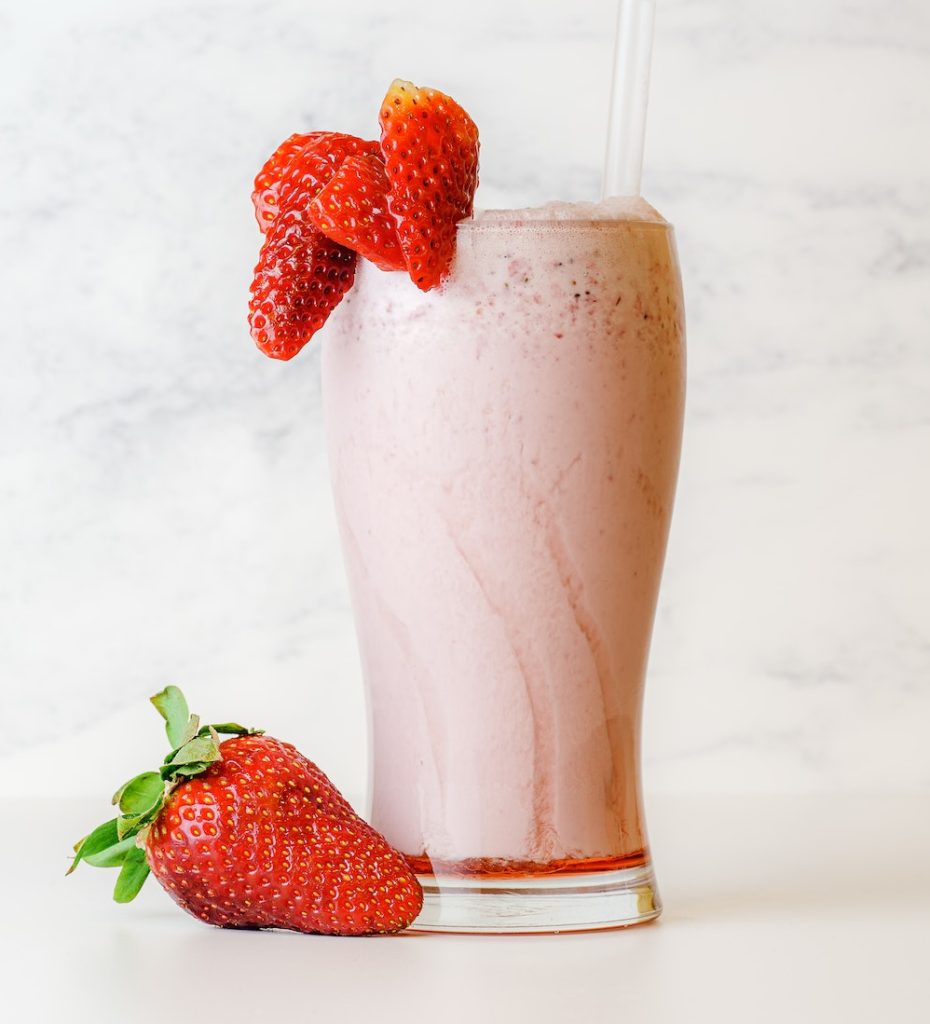When deconditioned individuals – fully deconditioned individuals in particular – think about beginning an exercise program, they typically harbor a silent fear.
This fear is: “How will I ever be able to exercise if I don’t even have the energy to get up off the couch?”
Some folks try to avoid confronting this fear by hiring a personal trainer. But if they don’t tell their personal trainer about it, this fear can lurk in the background for quite some while. This puts a drag on workouts and causes unnecessary worry and anxiety.
If you find yourself in this situation, then it’s best to confront your fear head-on with scientific facts, which no fear can stand up to.
In addition to giving you the confidence you need to begin working out, given that it helps you avoid the expense of hiring a personal trainer, it could well save you a ton of money.
So, let’s now critically examine this question of “How will I ever be able to exercise if I don’t even have the energy to get up off the couch?”
While it appears logical enough, this question leads to a dead-end, which means that nothing good will come of trying to answer it.
Instead, it’s better to ask a related but far more productive question, which is: “How can I help my body boost its level of energy production to ensure that I have the energy I need to exercise?”

This question is best answered by turning to the science of exactly how it is that the body produces energy.
Let’s start by imagining a campfire burning full-force on a cold night.
This campfire produces energy by burning fuel, i.e., by rapidly combining fuel with oxygen.

In the same way, our bodies produce energy by burning fuel, i.e., by rapidly combining fuel with oxygen.
In the case of our campfire, the fuel is wood, and when rapidly combined with oxygen, energy gets released in the form of heat and light.
A similar process occurs in the body, except that instead of using wood as its fuel, the body uses a particular form of sugar called glucose.
Now, at this point, you may be wondering why it is that when our campfire burns fuel, it produces heat and light energy, but when our bodies burn glucose, neither light nor significant amounts of heat are released, which means there is no flame.
An important difference between our imaginary campfire burning wood and our bodies burning glucose is that in the case of our bodies, enzymes are involved in the chemical process of releasing energy.
And the purpose of enzymes is to allow chemical reactions to occur at far lower temperatures than would otherwise be required.
This is why the body is able to burn glucose – and thus to release energy for fueling muscle contraction – at normal body temperatures. It’s also why no light or significant amounts of heat are generated when the body burns glucose.
Ultimately, burning glucose is the way the body fuels muscle contraction of all types.
This includes the beating of the heart, movement of the diaphragm muscle which is necessary for breathing, contraction of the intestinal muscles that allows us to efficiently digest food, and yes, the energy required for muscle contraction involved in physical activity.

However, the body can’t make glucose itself. So, the supply of glucose it uses to fuel muscle contraction can only come from food that has been swallowed.
In the end, the oxygen required for burning glucose is plentifully supplied to the body through breathing. So, it’s sufficient concentration of glucose in the bloodstream that’s critical to the body’s producing the energy it needs to support exercise.
This concentration is measured as the number of milligrams (mg) of glucose present in 100cc (about a half a cup) of blood.
Thousands of blood analyses have shown that when the concentration of glucose in the bloodstream is in the range of 100mg to 120mg, life is good!
Your mind is bright, sharp, and clear. Your mood, cheerful and cooperative. Possibilities seems limitless, and the horizon from which you view your life long-term is bright. You’re not hungry – in fact, sweets seem downright distasteful. And you have plenty of energy.

Now, when the concentration of glucose falls to about 90mg, your mind is still relatively sharp, although the degree of your mental focus – as well as your mood – begin to deteriorate.
And when the blood glucose level falls below 80mg, your mood begins to shift dramatically.
You’re less cheerful, less cooperative. Even smaller, less critical tasks seem more onerous than when your blood sugar level is higher.
And by the time this level falls to 70mg, you experience hunger – and the desire to eat sweets intensifies.
Now, if your blood glucose falls below 60mg per 100cc of blood, the symptoms you experience can include headache, pounding pulse, even nausea – and at the extreme, blacking out.
When your blood glucose even approaches a level this low, it doesn’t matter how much willpower you have. If someone puts a plate of fudge in front of you under these conditions, you’re going to eat it. There’s even a good chance you’ll eat all of it.
Unfortunately, if you were to do this, you’d be eating a significant amount of sugar. But instead of helping, flooding the digestive tract with sugar would actually make things way, way worse.
This is because of the way the body responds when you suddenly – and dramatically – increase the level of sugar in the bloodstream.
In fact, the way the body responds to spikes in blood sugar this intense is, once again, the way our bodies learned to respond during our extensive hunting-and-gathering stage of human history.
As pointed out in blog post 001, our history since the introduction of stable agriculture accounts for only a tiny, tiny slice of our total history.
In fact, it was only with the introduction of stable agriculture that we had a supply of food reliable enough that we could count on it, day in and day out.
During the extensive hunting-and-gathering stage of our history, our bodies learned to conserve the food we were able to find or hunt, and more importantly, the energy we derived from eating it.
Thus, today – even with our limitless supply of food – our bodies respond to a spike in the blood sugar level in the same way they did during our extensive hunting-and-gathering period.
Confronted with lack of a stable, reliable supply of food, our bodies learned to conserve every single calorie we ate – because our bodies didn’t know when food would be available again.
In other words, any food energy not immediately required to sustain life was stored as fat – an efficient, portable store of energy that could be drawn on during periods when no food was available.
Now, when viewed in this context, the body’s response to a spike in the blood sugar level that would result from eating, say, an entire plate of fudge, would be to store as fat any food energy in excess of what was immediately needed.
As it turns out, the details of how the body goes about changing food energy into stored fat are well understood.
When a spike in the blood sugar level to above, say, 120mg occurs, the pancreas responds by releasing insulin into the bloodstream.
This purpose of insulin is to remove from the bloodstream any sugar not required immediately, and to store it as fat (though a tiny amount gets stored as glycogen – a substance that can instantly be turned into glucose)
Actually, after a few minutes of a sugar “high” that results from soaring glucose levels, the insulin released by the pancreas causes the blood sugar to fall to a level even lower than it was before we ate our hypothetical plate of fudge.
In short, the end result of eating foods with high concentrations of sugar when the blood sugar is low is to ultimately reduce the blood sugar level even further, setting the body up for another round of low blood sugar symptoms and lethargy.
Worse yet, it has now been proven beyond any doubt that once your blood sugar falls to a level below about 60mg, it is impossible to raise it to an efficient level again that same day.
Finally, repeatedly spiking the blood sugar level by consuming concentrated sweets when the blood sugar is low causes the pancreas to become “trigger-happy”. That is, the pancreas releases insulin in response to successively smaller surges in the blood sugar level.
Bottom line? Allowing your blood glucose to fall to levels as low as 60mg can wreck your day.
If this is allowed to happen, be ready for the rest of your day to be filled with headaches, irritability, growling stomach, and other unpleasant symptoms, and your mood tense, impatient, and uncooperative. (Sound like anyone you know?)

So, how do you keep your blood sugar stabilized at an efficient level throughout the day and prevent drastic rises and falls in your energy level?
Just remember this phrase: “Hunger disappears when proteins are eaten.”
In short, eating sufficient protein is the key to starting your day off with energy and maintaining a high level of energy all day.
Because protein is a complex substance, the body breaks it down and digests it much more slowly that it does, say, refined sugar, which is a chemically simple substance that the body breaks down and digests with near lightning speed.
And while we’re temporarily on the topic of refined sugar, my suggestion is to avoid the temptation to be fooled by so-called “natural sugars” such as “raw sugar” (which is white table sugar with a bit of molasses added after the fact).
Digested only slightly less quickly than white table sugar (i.e., sucrose) are all forms of so-called “natural” sweeteners. This includes all forms of honey, granulated date sugar, blue agave syrup, and similar “natural sweeteners”.
If you want to help your body become healthier and stronger and produce more energy, you may want to make it a personal goal to over time, gradually reduce your use of all concentrated sweeteners. This includes artificial sweeteners, which are chemical compounds that don’t occur in nature, but are instead synthesized in laboratories – and which perpetuate the desire to eat concentrated sweets.
This is easier and far less onerous than it sounds.
Once you learn how to keep your blood sugar level between about 90mg and 120mg throughout the day, eating sweets will over time become less and less attractive.
To review, the key to producing the energy you need to exercise and to allow your body to naturally become disinterested in sweets over time is to stabilize your blood sugar level within the optimal range of 90mg to 120mg.
How do you do this?
The answer is to eat at least 20 grams (g) of protein at breakfast, as well as 20g of protein at each meal. For individuals whose protein requirement exceeds 60 grams per day (see below), these per-meal amounts should be adjusted upward (or high-protein snacks included between meals) to ensure that daily protein requirements are met.

I should note that there is now a large literature on human protein requirements that is based on ongoing research, most of it excellent. That said, this means that the issue of the optimal daily protein intake for humans remains far from settled.
See, for example, “How Much Protein Do You Need Every Day,” Harvard Medical School, (Cambridge, MA), 19 January 2022, https://www.health.harvard.edu/blog/how-much-protein-do-you-need-every-day-201506188096#:~:text=The%20Recommended%20Dietary%20Allowance%20%28RDA%29%20for%20protein%20is,amount%20you%20are%20supposed%20to%20eat%20every%20day.
Currently, the daily protein intake level recommended by the National Research Council is 0.8 grams of protein per kilogram of bodyweight.
Now, since a kilogram equals 2.2 pounds, you can easily calculate your recommended daily protein intake level for yourself.
Let’s say you’re an adult male who weighs 220 lbs.
To find your recommended daily protein intake level, first divide your bodyweight (of 220 lbs) by 2.2. This gives you your bodyweight in kilograms, which is 220/2.2 = 100 kilograms.
Then multiply your body weight in kilograms (100 kg) by 0.8 for a total of 80 grams of protein per day.
If you’re not particularly good at math, or for whatever reason would like to avoid having to make the calculation above, an alternative is to follow the general daily protein intake levels that appear in the table below.
These are the daily protein intake levels that for years were recommended by the National Research Council. They are also the levels with which I have personally had great success in terms of building health and maintaining muscle mass over time.
| Category | Daily Protein Intake Level (grams of protein) |
| Adult men | 70 |
| Adult women | 60 |
| Pregnant women | 100 |
| Lactating women | 120 |
Based on my own personal experience, there’s no real reason to eat more protein than this, unless for some reason you have temporarily elevated protein requirements (e.g., you’re, say, in the final six months of grueling training prior to a bodybuilding contest when you might work out with weights twice a day every day, for two hours or even more per workout).
In my view, other than in such exceptional cases, it’s best to use the daily protein intake levels referred to above as your baseline levels, and to only deviate from them if you have a solid reason to do so.
Why?
First, the scientific evidence on this topic that is available suggests that protein eaten far in excess of the baseline amounts referred to above isn’t used by the body to build health and produce energy. Instead, the body simply burns it as calories.
Second, all protein eaten must ultimately be broken down by the kidneys. Excessive protein intake levels thus put an unnecessary load on these vital organs.
Third, there is now some evidence that suggests that the human body can process a maximum of approximately 40g of protein at a time. This finding is consistent with my own personal experience.
Finally, proteins are expensive and scarce relative to carbohydrate foods, which are abundant and cheap. (Ever notice how many breads, pastries, rolls, pancakes, waffles, and muffins are served on all-you-can-eat breakfast buffets?)
In short, both building health and prudent financial management are best served by using the protein intake levels referred to above as baseline levels – at least until you find a good scientific reason to deviate from them.
But, how do you know how many grams of protein you’re eating?
Personally, I’ve never met anyone who hasn’t assured me that they’re “on a high-protein diet”.
However, in my experience, most people eat far fewer protein grams per day than they think. In fact, some folks who assuredly claim to be on a “high-protein diet” in fact eat fewer than 15 grams of protein a day.
As a result, when such folks first begin eating 60-70 grams of protein a day, they find eating that much protein difficult, since eating protein sates hunger so efficiently.
For such folks, by the time dinner time rolls around, they feel so full that many have trouble eating 20g of protein at their evening meal.
If you experience this, you may want to consider eating, say, 30-35 grams of protein at breakfast when you’re hungriest, and 25-30 grams of protein at lunch. This would allow you to cut back on protein intake at dinner to 5-10 grams when you don’t feel like eating much.
As you transition from your current nutritional regime to eating a protein-rich breakfast, bear in mind that the phrase “I’m never hungry at breakfast” really means “I overate last night”. If this resonates with you, then please be gentle with yourself during your transition to eating a protein-rich breakfast. Give your body time to adjust.
During this transition, bear in mind that your ultimate goal is to put into practice the age-old recipe for health and optimal energy output, which is “Breakfast like a king, lunch like a prince, dinner like a pauper.”
But how do you measure the number of protein grams you eat?
Actually, measuring your protein intake is not as difficult as it sounds.
With practice, you’ll be able to count the amount of protein you’ve eaten at the end of the day as easily as you count the amount of change in your pocket or purse.
Here are a couple of fundamentals to get you started.
| No. | Quantity and Type of Food | Protein Grams |
| 1 | One medium egg | 6 |
| 2 | One oz. milk (whole, 2%, 1%, or fat-free) | 1 |
| 3 | One 1” x 1” x 1” cube of cheddar (or similar) cheese | 1 |
| 4 | One-half cup of cottage cheese (4%, 2%, 1%, or fat-free) | 12 |
| 5 | 100 grams (about 3-1/2 oz.) pork sausage, fresh cooked | 13 |
| 6 | 100 grams (about 3-1/2 oz.) Canadian bacon, pork, fresh grilled | 24 |
| 7 | 100 grams (about 3-1/2 oz.) Bread, mixed-grain, toasted (incl whole-grain) | 10 |
| 8 | 100 grams (about 3-1/2 oz.) Butter, salted | 1 |
| 9 | One can water-packed tuna (“Nutrition Facts label specifies exact amount) | 20-25 |
Actually, your breakfast needn’t be large to include 20g of protein. For example, it would only take two scrambled eggs and an 8-ounce (½ pint) glass of milk (8g) to reach 20g of protein at breakfast. Any additional protein you received from a serving of say, breakfast meat, would put you well over your benchmark intake of 20g.
Alternatively, if you’re really in a hurry, you could just make yourself a breakfast protein shake from commercial protein powder that contains 20g of protein and add a bit of fresh fruit. Or drink a pre-packaged commercial protein drink containing 20g of protein on your way to work.

As for foods other than those that appear in the table above (of which there are obviously many), Mother Nature unfortunately didn’t provide us with a “Nutrition Facts” label that tells us the number of protein grams each contains. This is particularly true of vegetables or fruits we grow in our home garden or buy at a supermarket.
Not a problem.
US Department of Agriculture has kindly stepped in and analyzed virtually every single food available to North Americans.
This includes all foods we could possibly grow ourselves, fresh fruits and vegetables we buy at farmers markets and supermarkets, foods we cook or otherwise prepare at home, and even processed foods marketed under commercial brand names.
Presented in tabular format, USDA’s Composition of Foods shows the amount of protein, fat, carbohydrate, fiber, sugar, and calories present in 100 grams (i.e., about 3-1/2 oz.) of food weight.
All foods that appear in Composition of Foods are presented in alphabetical order. So, to find the amount of protein, fat, carbohydrate, fiber, sugar, or calories present in 100 grams (i.e., about 3-1/2 oz.) of food weight, use the “Page Down” key on your computer to scroll down to the food you’re querying. Then read the protein, fat, carbohydrate, fiber, sugar, and calorie content of that food horizontally across to the right.
The entire table – which I’ve adapted from USDA’s original Composition of Foods database to make it more user-friendly – can be downloaded from the yourheathblog homepage under the Resources for Download section.
A final benefit of eating 20g of protein at each meal is that protein slows digestion. This allows the calories from any carbohydrate you eat (e.g., toast at breakfast) to trickle bit by bit into your bloodstream, which further helps to sustain your energy level throughout your day.
In addition to protein, small amounts of fat (e.g., from butter or sausage taken with breakfast) likewise slow digestion. The same is true of fiber from, say, whole-grain toast taken at breakfast, a sandwich at lunch, or an apple, an orange, or even a whole-grain oatmeal-raisin cookie sometime mid-morning or mid-afternoon. This also helps stabilize your blood sugar level and optimize your energy level throughout the day.
By following the nutritional regimen recommended above, you’ll keep your blood sugar level high enough that you’ll feel like exercising. An additional benefit is that you’ll also be able to politely refuse, or cautiously nibble on sweets that colleagues – albeit with the best of intentions – so often pass around at work. It will also help you – over time – to gradually reduce your intake of concentrated sweeteners of all types, as these add calories, but offer few health-building benefits.
Till next time,
Jock Scarsborough
Photo Credits:
I wish to express my sincere thanks to all of the dedicated photographers who have made their work freely available to yourhealthblog.org for unlimited personal and commercial use without permission being required, and without any restrictions whatsoever with regard to use or modification.
The photos in the blog post above appear under the terms of the Creative Commons Attribution 2.0 Generic license, which may be viewed at https://creativecommons.org/licenses/by/2.0/
To express my gratitude to the photographers, I have included in the table below the attributions for the photographs in order of their appearance in the blog post. These attributions are as follows:
| No. | Title | Subject | Photographer | Download | Source |
| 1 | Cardio Workout | Unidentified | Andrea Piacquadio | 06 Nov 22 | pexels-andrea-piacquadio-3768916 |
| 2 | Lighted Bonfire | Unidentified | Jason Leung | 06 Nov 22 | jason-leung-Q8q4UGFQaeg-unsplash |
| 3 | Cable Crossovers | Unidentified | Anastase Maragos | 06 Nov 22 | anastase-maragos-fG0p4Qh_aWI-unsplash |
| 4 | Energetic Office Workers | Unidentified | Rondae Productions | 06 Nov 22 | pexels-rodnae-productions-7888985 |
| 5 | Low Blood Sugar | Unidentified | Andrea Piacquadio | 06 Nov 22 | pexels-andrea-piacquadio-3808016 |
| 6 | Salmon Steak | Unidentified | Krisztina Papp | 06 Nov 22 | pexels-krisztina-papp-2374946 |
| 7 | Strawberry Protein Shake | Unidentified | Sebastian Coman | 06 Nov 22 | pexels-sebastian-coman-photography-3625372 |